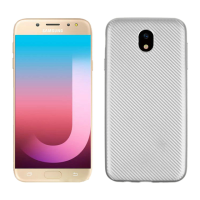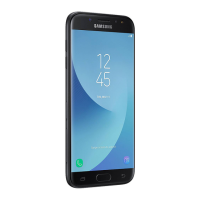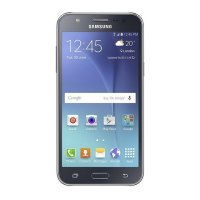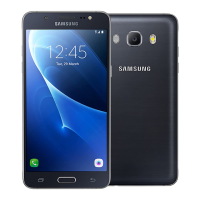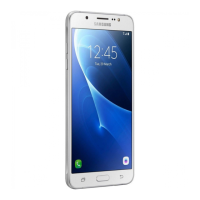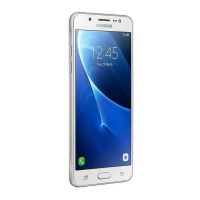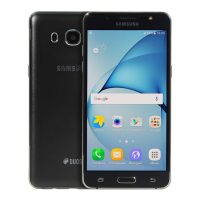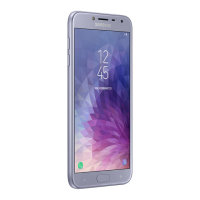Do you have a question about the Samsung SM-J530F and is the answer not in the manual?
Essential safety, warranty, and usage information before starting.
Explains device parts, keys, and what's included in the box.
How to charge the battery, reduce consumption, and tips for battery health.
Step-by-step guide for inserting SIM, USIM, and microSD cards correctly.
Turning the device on/off, restarting, and using touchscreen gestures.
Organizing apps, creating folders, and using widgets.
Setting screen locks, patterns, PINs, and fingerprint recognition.
Customizing information display when the screen is off and managing notifications.
Registering accounts and managing data with Samsung Cloud.
Making calls, sending messages, managing contacts, and blocking numbers.
Using the internet browser and configuring email accounts.
Taking photos/videos, using camera modes, and viewing media.
Connecting to networks, pairing devices, and managing data usage.
Using mobile payments and organizing games for a better experience.
Optimizing performance, managing storage, and updating the device.
Solutions for startup problems, network errors, battery issues, and more.
| Device Type | Smartphone |
|---|---|
| Model | SM-J530F |
| Announced | 2017, June |
| Dimensions | 146.2 x 71.3 x 8 mm (5.76 x 2.81 x 0.31 in) |
| SIM | Single SIM (Nano-SIM) or Dual SIM (Nano-SIM, dual stand-by) |
| Display Type | Super AMOLED |
| Screen-to-body ratio | ~71.5% |
| Chipset | Exynos 7870 Octa (14 nm) |
| CPU | Octa-core 1.6 GHz Cortex-A53 |
| GPU | Mali-T830 MP1 |
| Main Camera | 13 MP, f/1.7, 27mm (wide), AF |
| Main Camera Video | 1080p@30fps |
| Front Camera Video | 1080p@30fps |
| Loudspeaker | Yes |
| 3.5mm jack | Yes |
| Bluetooth | 4.1, A2DP, LE |
| GPS | Yes, with A-GPS, GLONASS, BDS |
| NFC | Yes (market dependent) |
| Radio | FM radio, RDS, recording |
| USB | microUSB 2.0 |
| Sensors | Fingerprint (front-mounted), accelerometer, gyro, proximity, compass |
| Talk time | Up to 21 h (3G) |
| Colors | Black, Blue, Gold, Pink |
| Status | Available |
| Resolution | 720 x 1280 pixels |
| OS | Android 7.0 (Nougat), upgradable to Android 9.0 (Pie), One UI |
| Internal Storage | 16GB |
| RAM | 2GB, 3GB |
| Expandable Storage | microSDXC (dedicated slot) |
| Front Camera | 13 MP, f/1.9 |
| WLAN | Wi-Fi 802.11 b/g/n, Wi-Fi Direct, hotspot |
| Battery | 3000 mAh, non-removable |
| Weight | 160 g |
| Display Size | 5.2 inches |
